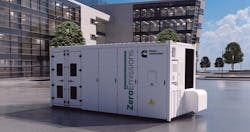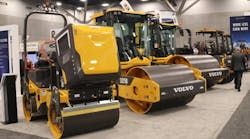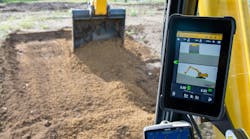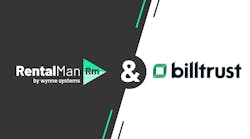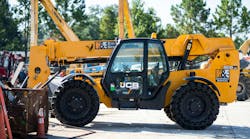Weigh the Evidence: Should Equipment Dealers be in Short Term Rentals?
Over the past six years, equipment dealers across the country have been growing their rental fleets and rental revenues have increased from just .4% of their total revenues in 2011, to more than 5% of their total revenues in 2016. But, as dealers are finding their way into the mainstream rental market, they still have a steep learning curve ahead.
With growing investments, dealers are becoming much more aware of operational metrics and fleet utilization. Unfortunately, most dealer systems cannot track time utilization across the fleet. The problem this creates is trying to determine how hard is the rental fleet working to produce the current financial results. Could you get more time utilization from your existing fleet investment, therefore producing a better yield? Although many dealers just getting started in rental are doing so from a reactive position, and generally don’t have a rental manager, they are able to achieve around 50 percent time utilization.
Industry benchmarks for large machines is usually 65 to 75 percent time utilization to make money. For dealers to achieve this kind of result, will take more than just showing up or being lucky. My observations and personal experience in achieving high levels of fleet utilization requires strategy, market focus, well defined processes, continual measurement and compensation plans that are aligned with utilization goals. This is the road ahead for most equipment dealers.
With the rent-to-rent market having been established more than 40 years ago, you might wonder why are equipment dealers just now getting into the rental? Why didn’t more of them make a move in the late 1990’s when the likes of United Rentals, CAT Rental Stores, Home Depot and Lowes were all getting in on the action?
Competing Business Models
During the last 25 years, the rental industry has grown from $5 billion to more than $45 billion and is a major disruptor to the distribution of construction equipment. Historically major manufacturers had dealer networks that invested heavily in facilities, inventory, personnel, and training with an assigned territory. The dealership business model was built around machine sales, and product support (parts and service). Ideally a machine sold would stay in the local area, and most likely be traded back to the dealer when buying a new machine. Dealers had control of the product support revenues and good profit margins at least through the first two owners of the machine, possibly up to 10 years.
But, the rental industry has a much different business model. In contrast, the business model for rental is quite simple. Focus on customer relationships, solving their problems through the right mix of equipment in your fleet, having it readily available and at competitive prices. Deliver this equipment through a support team focused on exceptional customer service, a sense of urgency that permeates the organization, and processes that ensure quality. This is the model and the objective is return on assets with profitability as the only acceptable result. Rental stores do not have a future product support revenue model. They have a short window of time (usually three to five years) with which to drive profitability from any asset. The business is all about driving fleet utilization, which drives revenues and then managing maintenance and repair costs.
Why Dealers Need Rental Today
Dealer territories and profit margins are being poached by many forces in today’s market. No longer do they have control of the used equipment sales as the auction market has circumvented the dealer. This has drastically reduced the higher profit margins dealers enjoyed in the past. Because the dealer is not in the transaction he is less likely to gain the product support profits as well. The internet is enabling “will fitters” (aftermarket parts suppliers) to participate in some of the parts revenues historically reserved for the dealer. The recent AED dealer survey indicates that since 2011, dealer revenues for product support services have been flat or slightly declining as a percentage of their total revenues. Parts and service, although associated with strong profit margins, cannot seem to gain more than 30 percent of a dealer’s total revenues. This has huge impact on dealer profitability and puts pressure on remaining 70 percent of revenues that comes from sales and rental.
Dealers average about 13 percent GPM on machine sales. Used machine margins are slightly higher as you might expect with new machines averaging more than 11 percent. So, with dealers struggling to grow parts and service revenues, they must look to their sales and rental efforts for real growth opportunities. They need the profitability from rental to prop up the profit opportunities being lost in parts and service. They now recognize strategically the importance of attracting new customers and growing market share will be dependent upon their success with rental.
So as dealers move head first into rental, exactly what aspects of the rental market should they pursue? There are many things for a dealer to consider when expanding into the rental market. Primarily, what is the value proposition you have for a customer other than you have a machine for rent? This is a services business not a products business.
Customers today have many more choices in how to source equipment than just the dealer. Dealers are working hard to try and morph their business model to compete in the rental market. Rental will continue to be important to a sustainable dealer business model in the future.
Competition is Raising Customer Expectations
The leading rental companies are continuing to raise the bar for competing against them. They are NOT pursuing a model based on cheap rental rates with off-brand equipment and poor service levels, but rather the exact opposite. They ARE expanding their footprint and expanding their fleet. Simultaneously, they are implementing advances in technology that will yield competitive advantage not only with a better customer service experience, but also internal benefits realized in fleet management. This is a winning combination for improving profits. Dealers engaging in rental must also be focused on process improvement and technology. For dealers searching for additional ways to improve their fleet utilization, the question is often asked “Should we be involved in short-term rentals?”
Short-term Rentals: Is it worth it?
Moving into the short-term rental space for a dealer might be anything less than a monthly rental. For some dealers that could mean less than three months. The transition from monthly rentals into weekly rentals might seem to make sense. However, it’s not a recipe for success. Not all products line up well with short-term jobs. Your product mix may not align well with short-term need and therefore no real opportunity exists. The customers that rent by the day and the week are much different than the monthly rental customers and can be more demanding as they are usually racing against time. To a customer renting equipment by the month, they can usually flex a day or two if there are support issues. To a customer renting by the week, hours are important, and a half-day seems like eternity. When a customer is renting equipment by the day, then minutes are important, and a couple of hours of unresponsive service is not acceptable. Bottom-line, transaction speeds are faster, the logistics are more important, and internal processes are more critical to spinning the machines in and out and have high impact on machine availability.
Your success with short-term rentals is heavily dependent upon customer perception of your overall convenience. Are you easy to do business with? Do you generally have good availability? Are your location(s) easy to access? Are the traffic patterns in the area favorable to getting to your location? Do you offer trailers, so customers can pick-up your smaller compact machines? Do your location(s) have proximity to new construction sites so that your delivery charges are considered reasonable? Remember, freight charges relative to a monthly rental rate is often not an issue for a customer, but freight charges against a weekly rental rate or even a daily rate can become disproportional and give the customer resistance to renting from you.
|
PRO’S of Short-Term Rental
|
|
CON’S of Short-Term Rental
|
Pursuing Opportunity Requires Strategy
In summary, dealers must make some difficult choices when entering the short-term rental market. Recognize that this will put pressure on your operations and potentially upset some current rental-center customers. How much rental activity would you need to equal gross profits earned from those rental stores? Can you potentially offer them re-rental machines to grow their business and you stay back from the short-term retail market? What is the overall risk if you entered the market and one or two of your local rental centers turned against you? Is it possible to establish a product break between those machines that you would actively pursue short-term rentals and those that you would not?
Short-terms rentals does have some upside potential for most dealers. The machines that you rent by the month, usually have some application in smaller jobs as well. However, most dealers have not evolved far enough in their rental strategy, process improvement and fleet mix to enter into the short-term rental market and be very successful. There is market opportunity, but requires strategy and a plan to execute. Remember customer expectations are high and first impressions are hard to erase.

